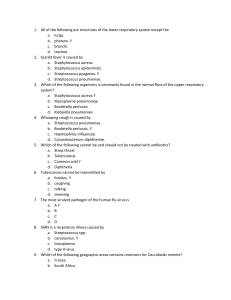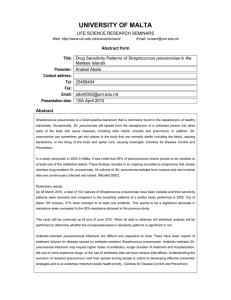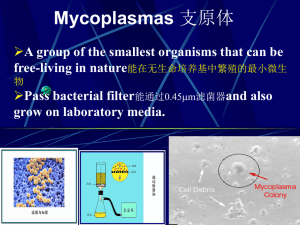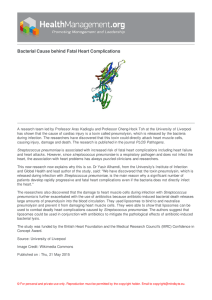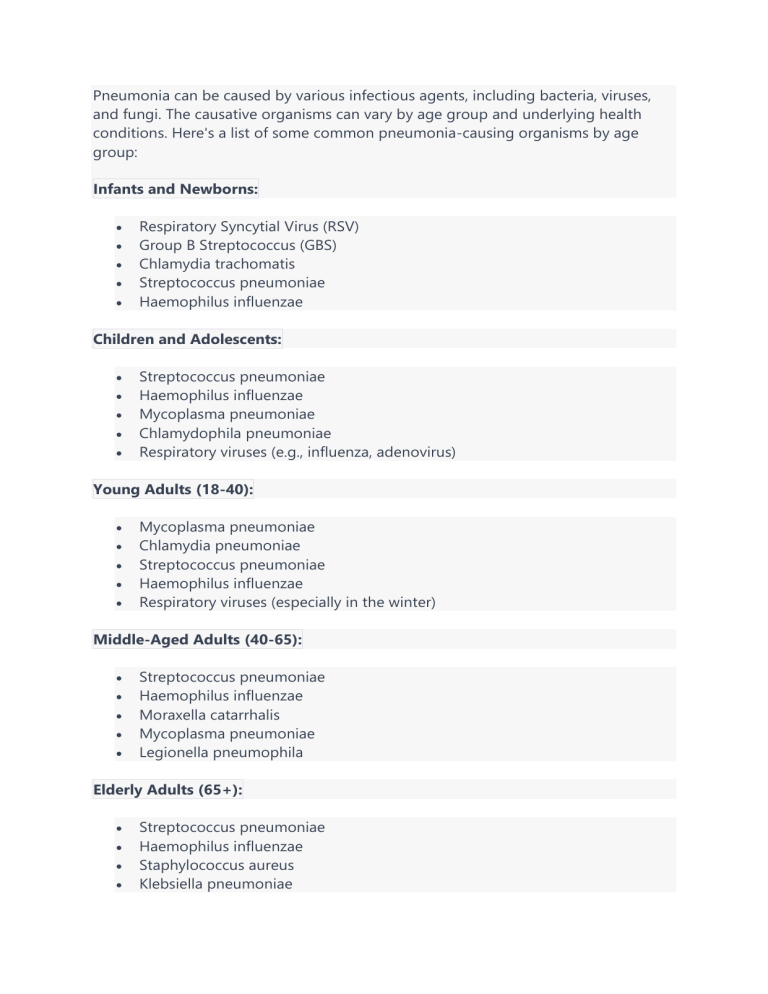
Pneumonia can be caused by various infectious agents, including bacteria, viruses, and fungi. The causative organisms can vary by age group and underlying health conditions. Here's a list of some common pneumonia-causing organisms by age group: Infants and Newborns: Respiratory Syncytial Virus (RSV) Group B Streptococcus (GBS) Chlamydia trachomatis Streptococcus pneumoniae Haemophilus influenzae Children and Adolescents: Streptococcus pneumoniae Haemophilus influenzae Mycoplasma pneumoniae Chlamydophila pneumoniae Respiratory viruses (e.g., influenza, adenovirus) Young Adults (18-40): Mycoplasma pneumoniae Chlamydia pneumoniae Streptococcus pneumoniae Haemophilus influenzae Respiratory viruses (especially in the winter) Middle-Aged Adults (40-65): Streptococcus pneumoniae Haemophilus influenzae Moraxella catarrhalis Mycoplasma pneumoniae Legionella pneumophila Elderly Adults (65+): Streptococcus pneumoniae Haemophilus influenzae Staphylococcus aureus Klebsiella pneumoniae Enterobacter spp. Pseudomonas aeruginosa Influenza and other respiratory viruses Immunocompromised Individuals: A wide range of organisms, including opportunistic pathogens, may cause pneumonia in immunocompromised individuals. These can include bacteria such as Staphylococcus aureus, Pseudomonas aeruginosa, and Mycobacterium tuberculosis, as well as various fungal and viral pathogens. It's important to note that the above list is not exhaustive, and the specific causative organism can vary based on individual circumstances, geographic location, and vaccination status. Additionally, the introduction of vaccines like the pneumococcal vaccine has had a significant impact on reducing pneumonia cases caused by Streptococcus pneumoniae in both children and adults. Proper diagnosis and treatment are essential in managing pneumonia, and healthcare professionals will consider a patient's age, health status, and other factors when determining the likely causative agent.
